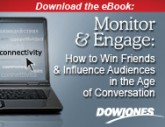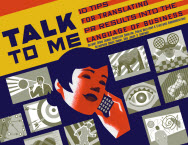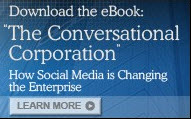Posted on April 15, 2010. Filed under: Public Relations, Social Media | Tags: crisis communications, Social Media, Toyota |
Since November 2009, almost nine million Toyotas have been recalled, including its top-selling luxury model, Lexus, and high-tech hybrid car, Prius. Fixing the errors will cost over $2 billion in repairs, yet what is the price Toyota has to pay to repair its reputation, which took so many years to build?
Toyota first needs to understand the scale of the damage to its reputation. At Dow Jones, we’ve done some analysis about the way messages about Toyota’s brands spread across traditional and social media. Social media was particularly influential as Toyota’s current and potential customers posted information on the company.
Dow Jones Insight shows that between November 1, 2009, and January 31, 2010, the large majority of coverage on Toyota’s recalls appeared in social media in the US. 2,592 blogs posts were added during that time frame, followed by 1,879 board discussions, 1,290 online articles and 443 press articles.

Furthermore, a more in-depth analysis gives a deeper insight on which social networking sites, blogs and boards discussed the recalls more frequently:

Yet social media coverage peaked towards the end of January 2010:

What do these charts reveal? It is striking to observe how the media landscape has changed considerably, given that more messages about Toyota circulated in social media compared to the traditional media (online, print and broadcast). Taking blogs and boards together, the results show that social media generated 158% more coverage compared to traditional media channels. It follows that social media platforms have led to many-to-many conversations amongst angry costumers.
What does this tell Toyota? Given that so many messages about the recalls circulated all through social media, it is the hub at which influence starts and identifying the voices that travel most widely and have the greatest impact in the conversation is critical.
According to PR and marketing agency, Ketchum, there are three types of WOM individuals, the ‘Hear Me’, ‘Reputation Terrorist’ and ‘Competitive Destroyers.’ The ‘Hear Me’s’ tend to make noise by writing letters to company management, newspapers editors and consumer trade organizations; yet they don’t have an agenda with a particular party as the other two types. While the ‘Reputation Terrorist’ has an interest in publicly criticizing a company or brand with the aim to introduce a change, the ‘Competitive Destroyers’ goal is not only to damage a company’s reputation, but to put it out of business.
Therefore, it is vital for a business to not only identify and monitor these different types of critics, but also to engage with them directly as they are the most influential amongst their peers.
Graco, for instance, issued a voluntary recall of over 1 million of its strollers in January, 2010 (see the PRWeek story about the Graco recall; subscription required). Subsequently several members of the blogosphere praised Graco for reaching out to consumers through several social media platforms, including Facebook, Twitter and the company’s corporate blog.
Graco showed that even though its reputation was continuously at stake – given that the internet has changed the traditional flow of communication from one-to-many to many-to-many – they used social media to be available to customers, increasing their reliability and re-building the feeling of trust between consumer and brand. This case study illustrates that, nowadays, press releases may not be the most effective way to revert a company’s reputation as it was in the past.
Claudia Schoenbohm is a writer and consultant in the Dow Jones Media Lab, based in London.
Read Full Post |
Make a Comment ( None so far )
Posted on March 26, 2010. Filed under: Public Relations | Tags: crisis communications, Public Relations, Toyota |
Toyota, which built its brand not around sizzle but quality and reliability, has allowed its rather ordinary recall to metastasize into a reputation-threatening crisis. Incentives seem to be putting a little more polish on the brand, but good PR is still essential for long-term performance.
Unlike Johnson & Johnson’s reaction to its Tylenol-tampering scare in 1982, Toyota officials chose to ignore complaints about sudden unintended acceleration in some of its vehicles. Rather than come forward with hat in hand to offer a heartfelt mea culpa to its customers, and to outline detailed plans to remedy the problem, the carmaker responded with delays, obfuscation and buck-passing. As a result, Toyota’s fleeting opportunity to take control of the story evaporated, leaving the automaker in an untenable public relations predicament.
Toyota’s inability to act quickly and implement a crises communications strategy to offset the flood of negative attention tarnishing its brand will likely be examined for years by PR wonks. The consensus view among PR and crises management professionals is that J&J’s bold handling of Tylenol’s safety scare was key to its success. In fact, within weeks J&J developed tamper-resistant packaging, which, in the end, served to heighten the value of the Tylenol brand by making product safety one of its hallmarks. What’s more, while J&J’s share price and market share plunged on the news, the pharmaceutical concern’s stock was 10% higher a month later due in part to J&J’s prompt response – something consumers and investors alike were willing to reward.
By contrast, following Toyota’s safety scare, its top brass are now facing a blistering inquiry by congressional members eager to parade their pro-American bona fides — or alternatively, score political points by soothing Detroit’s smarting ego. Long sensitive to the potential for backlash for becoming the market leader in worldwide sales, Toyota may also have to manage pent-up resentment in the U.S. generated by its displacement of General Motors from its leadership status at a time when U.S. manufacturing jobs are flagging. And in its all-out push to become the world’s top carmaker, Toyota admittedly strayed from its core value of focusing on the customer and quality.
Making matters worse, competitors, including Ford and GM, are now angling to exploit Toyota’s Achilles’ heel to poach customers by playing up their own vehicle safety records and promoting strides in dependability. Indeed, Toyota’s recall will test its legions of loyal customers.
But can Toyota still win the PR war and recover from the worst crisis in its storied history? In short, yes!
Toyota’s slow response to its sticking accelerators manifested the gulf between Western and Japanese corporate cultures (Toyota’s glacial decision-making process is legendary). No doubt, Toyota will apply the same rigor to resolving its safety issues that has made its widely emulated lean manufacturing philosophy and production line efficiencies the envy of world. The venerable Japanese company will need to effectively communicate these re-focused plans to the media … quickly.
Toyota can fine tune its communications strategy by evaluating their coverage and understanding who their key influencers are and what they’re saying. Check back next week for a look at how Toyota’s recall played out in traditional and social media.
Brian Panton is a quality assurance specialist and report writer in Washington, DC.
Read Full Post |
Make a Comment ( None so far )






